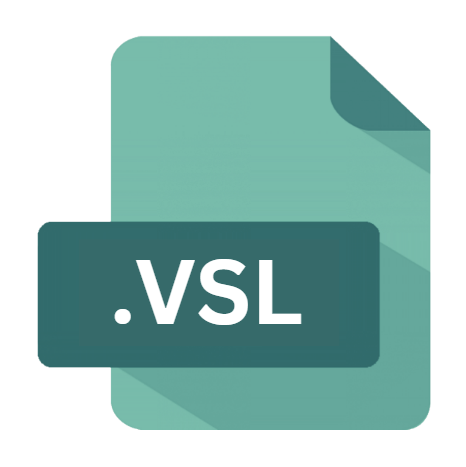.VSL File Extension

Visio Add-on
| Developer | Microsoft |
| Popularity | |
| Category | Plugin Files |
| Format | .VSL |
| Cross Platform | Update Soon |
What is an VSL file?
VSL files are associated with Microsoft Visio, a powerful diagramming and vector graphics application used for creating flowcharts, diagrams, org charts, floor plans, and more.
These files serve as add-ons or extensions that enhance the functionality of Visio by providing additional features, templates, shapes, or tools.
More Information.
Microsoft Visio has a long history of supporting add-ons and extensions, dating back to its early versions in the 1990s.
The introduction of the .VSL file format expanded Visio’s extensibility by providing a structured and organized format for distributing add-ons.
Initially, add-ons were developed to address specific needs or challenges in diagramming and visualization, such as industry-specific templates, custom shapes, or advanced diagramming tools.
Origin Of This File.
The .VSL file format was introduced by Microsoft as a standardized way to package and distribute add-ons for Visio.
These add-ons extend Visio’s capabilities by offering specialized features or tools tailored to specific industries, domains, or workflows.
File Structure Technical Specification.
VSL files are essentially zip archives containing the files and resources required to install and activate the add-on within Visio.
While the exact structure and contents of .VSL files may vary depending on the add-on’s functionality and complexity, common components include:
- Add-on Manifest: XML file specifying metadata about the add-on, such as its name, version, author, description, dependencies, and compatibility with different versions of Visio.
- Executable Code: Binary files containing the add-on’s code, assemblies, libraries, or components required to add new features or functionality to Visio.
- Resources: Images, icons, configuration files, or other assets used by the add-on for user interfaces, toolbars, or other elements within Visio.
- Documentation: Readme files, user guides, or other documentation providing information about the add-on’s features, usage, installation instructions, and licensing terms.
How to Convert the File?
Converting .VSL files is generally not necessary, as they are specifically designed for use with Visio. Users may need to extract or modify the contents of .VSL files for various purposes, such as customization or troubleshooting.
Conversion methods can vary depending on the specific requirements and tools available. Common approaches include:
- Decompression: Extract the contents of .VSL files using standard archive extraction utilities such as WinRAR or 7-Zip.
- Modification: Make any desired changes or modifications to the extracted files, such as editing the add-on manifest or updating resources, using a text editor or development environment.
- Repackaging: Once modifications are complete, repackage the modified files into a new .VSL file using the appropriate compression format, ensuring that the directory structure and metadata are preserved.
Advantages And Disadvantages.
Advantages:
- Enhanced Functionality: .VSL files allow users to extend Visio’s functionality by adding new features, templates, shapes, or tools to the software, enhancing its capabilities for diagramming.
- Customization: Users can customize and tailor Visio to their specific needs and workflows by installing add-ons that address their requirements or preferences.
- Community Contributions: The availability of .VSL files encourage collaboration and community contributions, as developers and users can create and share add-ons containing useful features and enhancements.
Disadvantages:
- Dependency Management: Some add-ons may have dependencies on specific versions of Visio or other add-ons, leading to potential compatibility issues or limitations.
- Quality Control: Not all .VSL add-ons may be of the same quality or reliability, and users should exercise caution when downloading and installing add-ons from untrusted sources to avoid potential stability or security risks.
- Performance Impact: Certain add-ons may impact the performance or stability of Visio, particularly if they are poorly optimized or resource-intensive.
How to Open VSL?
Open In Windows
- Download and install Microsoft Visio from the official website or authorized sources.
- Launch Visio and navigate to the “Add-ons” or “Extensions” menu.
- Select “Manage Add-ons” from the menu to open the Add-ons Manager.
- Click on the “Install” button and navigate to the location of the .VSL file containing the add-on you want to install.
- Select the .VSL file and follow the prompts to install the add-on, and it will be activated within Visio.
Open In Linux
- Microsoft Visio is primarily designed for Windows and does not have native support for Linux operating systems.
- Consider using Wine or a similar compatibility layer to run Microsoft Visio on Linux. However, compatibility may vary, and not all features may work as expected.
Open In MAC
- Microsoft Visio is only available for Windows, and there’s no native support for macOS.
- Consider using alternative diagramming software with similar add-on capabilities that are compatible with macOS.













